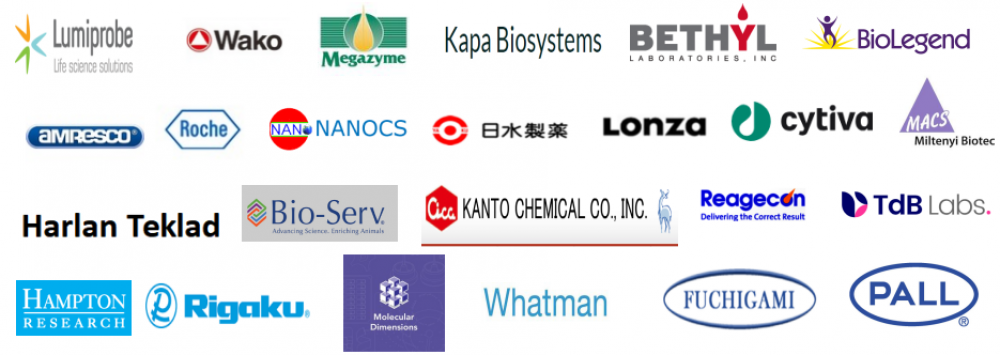Oxoid CM0992B 滤膜法产气荚膜梭菌琼脂基础
Oxoid CM0992B M-CP AGAR BASE
MEMBRANE CLOSTRIDIUM PERFRINGENS (m-CP) MEDIUM
Code: CM0992
A medium for rapid isolation and presumptive identification of Clostridium perfringens from water samples.
一种用于从水样中快速分离和推定鉴定产气荚膜梭菌的介质。
| Typical Formula* |
gm/litre
|
|
| Tryptose |
30.0 |
|
| Yeast Extract |
20.0 |
|
| Sucrose |
5.0 |
|
| L-cysteine hydrochloride |
1.0 |
|
| Magnesium sulphate.7H2O |
0.1 |
|
| Agar |
15.0 |
|
| Bromocresol purple |
0.04 |
|
| pH 7.6 ± 0.2 @ 25°C |
|
|
* Adjusted as required to meet performance standards
m-CP SELECTIVE SUPPLEMENT
Code: SR0188
| Vial contents (each vial is sufficient for 500ml of medium) |
per vial
|
per litre
|
| Polymyxin B sulphate |
12.5mg |
25.0mg |
| D-Cycloserine |
200.0mg |
400.0mg |
Directions
Suspend 35.55g of m-CP Agar Base in 500ml of distilled water Mix well and sterilise by autoclaving at 121°C for 15 minutes. Cool to 50°C and aseptically add the contents of one vial of m-CP Selective Supplement reconstituted as directed. Aseptically add the following sterile solutions dissolved in distilled water:
方向
将 35.55g m-CP Agar Base 悬浮在 500ml 蒸馏水中 充分混合并在 121°C 高压灭菌 15 分钟进行灭菌。 冷却至 50°C 并在无菌条件下加入一瓶按指示重新配制的 m-CP 选择性补充剂的内容物。 无菌添加以下溶解在蒸馏水中的无菌溶液:
| Component |
Solution |
Volume |
| Phenolphthalein biphosphate tetrasodium salt |
0.5% |
10.0ml |
| Ferric chloride hexahydrate |
4.5% |
1.0ml |
| Indoxyl b-D-glucoside |
0.75%† |
4.0ml |
† equivalent to 30mg in 4ml
NB. Fresh solutions must be used. Mix well and pour into sterile Petri dishes.
To reconstitute m-CP Selective Supplement, aseptically add 2ml of sterile distilled water to 1 vial of supplement. Mix gently to dissolve.
Description
Membrane Clostridium Perfringens (m-CP) Medium is a selective and chromogenic medium for the presumptive identification of Clostridium perfringens from water samples.
m-CP Medium was first described by Bisson and Cabelli1 for the rapid quantitation of Clostridium perfringens from a variety of water samples (seawater, potable water and sewage). The medium was shown to give better recovery of Clostridium perfringens from water and sewage samples than the Bonde pour tube method1.
m-CP Medium has now been recommended in European Council Directive 98/83/EC for testing the quality of water intended for human consumption2.
In m-CP Medium lack of b-D-glucosidase activity (an enzyme involved in cellobiose fermentation), fermentation of sucrose and production of acid phosphatase are used to differentiate presumptive Clostridium perfringens colonies from other Clostridium spp.
Lack of b-D glucosidase activity means that Clostridium perfringens does not cleave the chromogen, indoxyl b-D glucoside, in the medium. Furthermore, as the organisms ferment the sucrose in the medium, reducing the pH, bromocresol purple changes from purple to yellow. This results in characteristic opaque yellow Clostridium perfringens colonies.
Most other Clostridium spp. will appear as either purple colonies, due to the lack of sucrose fermentation, or blue/green colonies where the organism is still cleaving Indoxyl b-D glucoside and also fermenting sucrose (see table).
Presumptive positive Clostridium perfringens colonies can be further tested for acid phosphatase activity by exposure to ammonium hydroxide vapour for 20 to 30 seconds. Clostridium perfringens colonies turn pink or red as phenolphthalein diphosphate is cleaved by acid phosphatase. No colour change will be seen with colonies of organisms that do not posses acid phosphatase. It is important this further test is carried out as there are a very small number of non-perfringens clostridia that produce yellow colonies. However, these colonies will remain yellow after exposure to ammonium hydroxide as they are acid phosphatase negative.
D-cycloserine, polymyxin B and incubation at 44°C inhibit the growth of background flora such as Gram-negative organisms and staphylococci.
Technique
Filter the water sample using a 0.45mm cellulose acetate filter,(cellulose acetate has been found by Oxoid to be the best performing filter type, however the filter quality may vary from brand to brand. It is advised to validate the filter type to be used, according to ISO 7706). Place the filter onto the m-CP Medium. Incubate anaerobically for 21 ± 3 hours at 44 ± 1°C. Examine the plates for presumptive positive opaque yellow colonies that turn pink or red after exposure to ammonium hydroxide vapours for 20-30 seconds.
On m-CP Medium typical colonies will appear as follows:
| Organism |
Typical Colony Colour |
| Clostridium perfringens |
Opaque Yellow |
| Other Clostridium spp. |
Blue/Green |
|
Purple |
|
|
Opaque Yellow |
Storage conditions and Shelf life
Store the dehydrated medium at 10-30°C and use before the expiry date on the label.
m-CP Selective Supplement SR0188 should be stored at 2-8°C.
Prepared medium may be stored for up to 5 days at 2-8°C in the dark.
储存条件和保质期
将脱水培养基储存在 10-30°C 并在标签上的有效期之前使用。
m-CP 选择性补充剂 SR0188 应储存在 2-8°C。
制备好的培养基可以在 2-8°C 的黑暗中保存长达 5 天。
Quality control
| Positive control: | Expected results |
| Clostridium perfringens ATCC® 13124 | Yellow, then Pink/Red |
| Negative controls: | |
| Escherichia coli ATCC® 25922 * | Inhibited |
| Clostridium sporogenes ATCC® 19404 * | Purple |
* This organism is available as a Culti-Loop®
References
1. Bisson, J. W. and Cabelli, V. J. (1979) Applied and Environmental Microbiology, Vol. 37, No. 1, pp 55-88.
2. E.U. (1998) 98/83/EC of Council of 3rd of November 1998 on the quality of water intended for human consumption. Off. J. Eur. Commun., L330, 32-54
